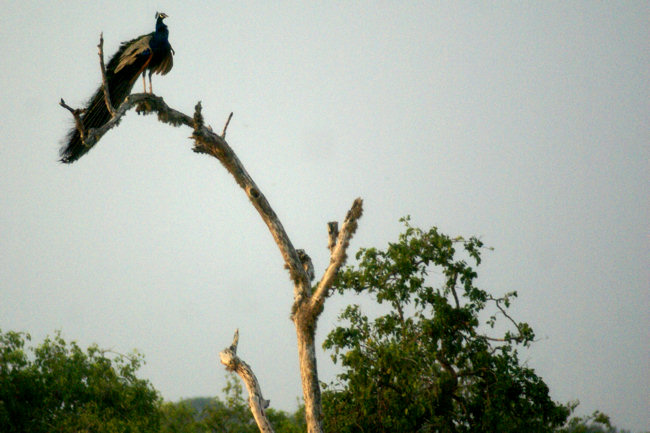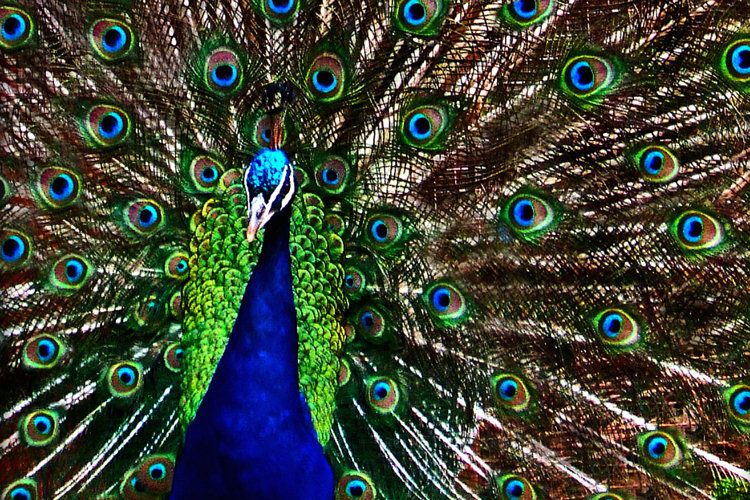Wild Peacocks in Yala National Park
Wild Peacocks up trees? In England I am used to seeing peacocks walking around the manicured lawns and gardens of stately homes that once belonged to Kings, knights, Barons, Lords and Ladies.

Yala National Park Sri Lankan Wild Peacocks up a tree
I found it really hard to accept peacocks walking around their natural environment in the bush and jungle of Yala Natitonal Park in Sri Lanka. What was very alien was seeing them perched up in the top of trees during our 4x4 safari tour. Most peacocks in captivity have had their wings clipped so they cannot fly away,
Most people can recognise a peacock because of its famous iridescent tail feathers which the male displays in a large fan. What I wasn't expecting was how when tucked up behind the body in the rest position it helps camouflage the bird when perched in a tree.
The above photograph is not a good example of this, but in dense jungle forest. The tail looks like a log or broken branch and thus helps the peacock merge into its environment. The female is called a peahen. Together technically they are called peafowl but most people call the male and female Peacocks even though this is not accurate. In the wild they have an average life span of 20 years.

Yala National Park Sri Lankan Wild Peacocks displaying
So why does the male have such an amazing showy tail? The simple answer is to attract the ladies. It is used in courtship displays. The biggest and best normally gets the girl. The fan arches over the back of the peacock and touches the ground either side. These wonderful feathers have been its down fall as poachers have sort out the males to sell the feathers for cash and to eat the meat as part of the 'bush meat' trade.
Successful males quite often control a harem of peahens. The females lay between 3 to 5 eggs. They are ground feeders and eat seeds, insects, vegetable matter and small creatures. Here is a silly fact about peacocks. What do you call a group of peafowl? No it is not a flock. It is called a 'party'
Travel books

